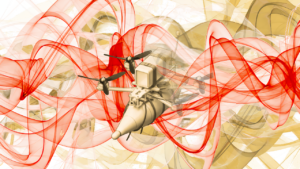Retired Navy Captain Terry Pudas, who inherited the Pentagon’s Office of Force Transformation from the late Art Cebrowski, recently wrote a short piece describing an alternative construct for defense planning [“Trends and Shocks,” Defense News, 23 April 2007]. Pudas was Cebrowski’s deputy and they worked closely with Enterra’s Senior Managing Director Tom Barnett exploring how future scenarios could unfold — a point Pudas notes in his op-ed piece. Pudas writes:
“Today’s world is simultaneously more complex and interdependent than at any time in modern history. Myriad linkages now intertwine the world’s political, economic, military, business and communications spheres to a degree once considered unfathomable. Yet this integration also brings new challenges, since a crisis or a catastrophe in one domain can quickly spill over into multiple policy spheres concurrently. This connectedness — what the futurist Thomas Homer-Dixon calls ‘tectonic stresses,’ in his latest work, ‘The Upside of Down’ — poses new challenges for U.S. defense strategy. To successfully navigate this vastly more interconnected world requires a different mechanism to assess the future. Our office is now in the early stages of exploring that new means — an initiative we call ‘Trends and Shocks.’ This is not just another exercise to crystal-ball a hazy future. Instead, it represents a proposed alternative strategic construct for defense planning. It reflects the growing recognition that national security is affected by developments and real-world events once thought to be far removed from defense planning, like the aftermath of Hurricane Katrina or the outbreak of a national pandemic. The objective is to provide senior leaders with a much richer context for strategic planning as well as a corresponding understanding for managing risk.”
For anyone who has followed this blog, that language should sound familiar. I have often written about the interconnectedness of challenges and spillover effects from one sector to the next. Tom and I still talk about these challenges with clients. It therefore comes as no surprise that Pudas’ article reflects some of Tom’s thinking.
“Strategic shocks are not new. Our history is replete with shocks that have occurred, ranging from the Great Depression to Pearl Harbor, and from the Atomic Era to the end of the Cold War. These shocks, in essence strategic surprises, fundamentally altered how the nation thought about security and the role of the military. Lately, however, these kinds of shocks are rising in number, as witnessed by the attacks of 9/11, the SARS crisis, tsunamis in Asia and Hurricane Katrina. It is prudent, then, that we widen the analytical lens used for defense planning, since these events are redefining the military’s role. There is a marked difference between trends and shocks. Trends tend to move along long-term, predictable paths, so we can extrapolate where trends are heading. Examples might include demographic trends of population aging or the increasing use of advanced types of technology. But separate trend lines can sometimes intersect, with their subsequent course markedly altered. That is why closely monitoring how trends evolve is so exceedingly important. Shocks, however, are those events that punctuate a trend line or vastly alter its trajectory. Some we can predict, others might catch us unaware. Shocks also exert second- and third-tier effects that magnify their impact across multiple domains — what Tom Barnett calls ‘systems perturbations’ in his widely read work ‘The Pentagon’s New Map.’ For DoD, any shock requires a re-examination of defense planning assumptions and in extreme cases might substantially reorient department thinking, planning and force development. Trends and Shocks allows the department to significantly broaden the analytical lens used to make sense of a seemingly chaotic national security environment. A wider aperture would allow the department to scan for trends that might harbor future shocks, and once unearthed, plan for their occurrence or possibly disrupt their trajectory.”
Trends and Shocks analysis is another way of describing resilience planning. As Pudas notes, the wider the aperture you use the better your planning and the more holistic your approach for preventing or mitigating negative impacts of trends and shocks. Pudas provides a few examples of trends and shocks he believes the Pentagon must consider:
“Analysis and findings arising from the Trends and Shocks enterprise could inform policy and strategy development processes like the National Defense Strategy, the Quadrennial Defense Review and the Strategic Planning Guidance, among others. Recent thinking by our office has further defined a key list of Trends and Shocks for senior defense leaders to consider, such as the advent of a highly proliferated world; nonmilitary security threats; and the diffusion and evolution of irregular warfare. Some shocks deemed significant would be the sudden emergence of disruptive technologies; the collapse of a strategic state; nonconventional confrontations or the use of nuclear weapons by nonstate actors. These lists are not meant to be exhaustive but to jumpstart strategic thinking, sharpen scenario planning and establish policies that will diffuse emerging trends and shape the strategic environment in our long-term interests.”
A Trends and Shocks list for businesses would, of course, look somewhat different than Pudas’ Department of Defense list. It would undoubtedly contain some of the same trends or events, because any such list must be exhaustive to be valuable, but it would also include a lot of things that the Pentagon rarely thinks about. The point of this kind of analysis is not to be predictive but to ensure that you are not surprised. Pudas concludes his thoughts this way:
“We fully recognize that the permutations of likely trends and shocks are infinite and context-dependent. This analysis is pragmatic and would respond to a need to provide senior leaders with useful information and new ways of understanding the interconnections that are the bedrock of today’s world. This would be a critical first step. Denial and defensiveness are, as described by Peter Schwartz in his work ‘Inevitable Surprises,’ the most common reactions typical leaders initially exhibit when confronted by strategic shocks. For national security, that response is unacceptable. If this paradigm of Trends and Shocks proves viable, then more extensive research could be undertaken. To understand possibilities and plan accordingly, the department might start integrating trends analysis into its long-term strategy process to avoid those shocks that might inevitably define our time. As a society, we no longer can afford the luxury of waiting until they explode in the harsh light of a new day.
Pudas gives the impression that this kind of thinking hasn’t been taking place anywhere in the defense community, but that is a false impression. Bradd Hayes, Enterra’s Senior Director of Communications and Research, has facilitated a couple of workshops for the Navy over the past year during which trends, uncertainties, and wild cards were examined. The National Intelligence Council, in its sweeping tour d’horizon of the future entitled Mapping the Global Future, took a similar tack. As big a challenge as it is to identify trends, uncertainties, and wild cards, identifying how to address these potential scenarios is an even bigger challenge. Only a holistic approach that cuts across an organization’s various departments and considers how to protect its most critical assets and processes can make it truly resilient.




